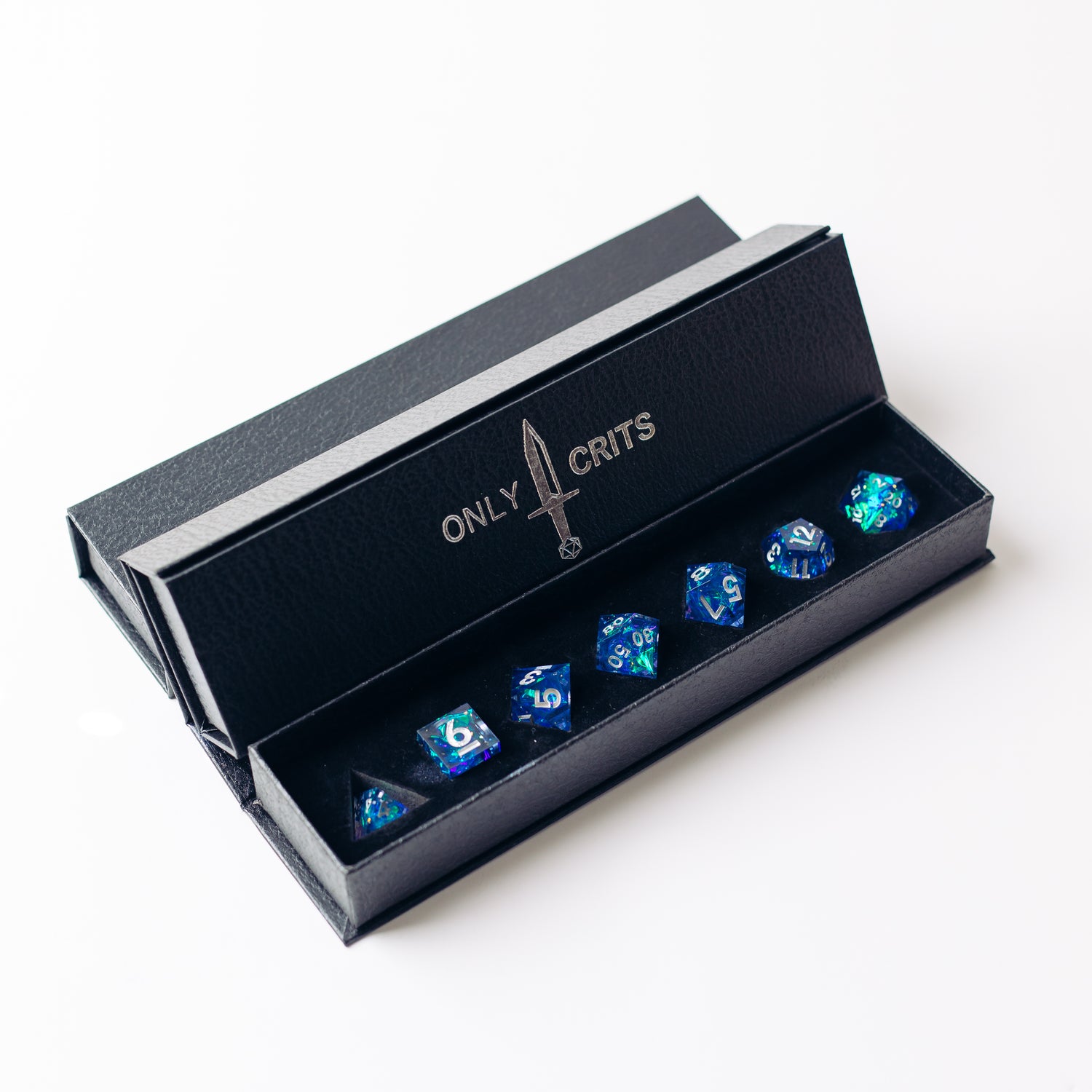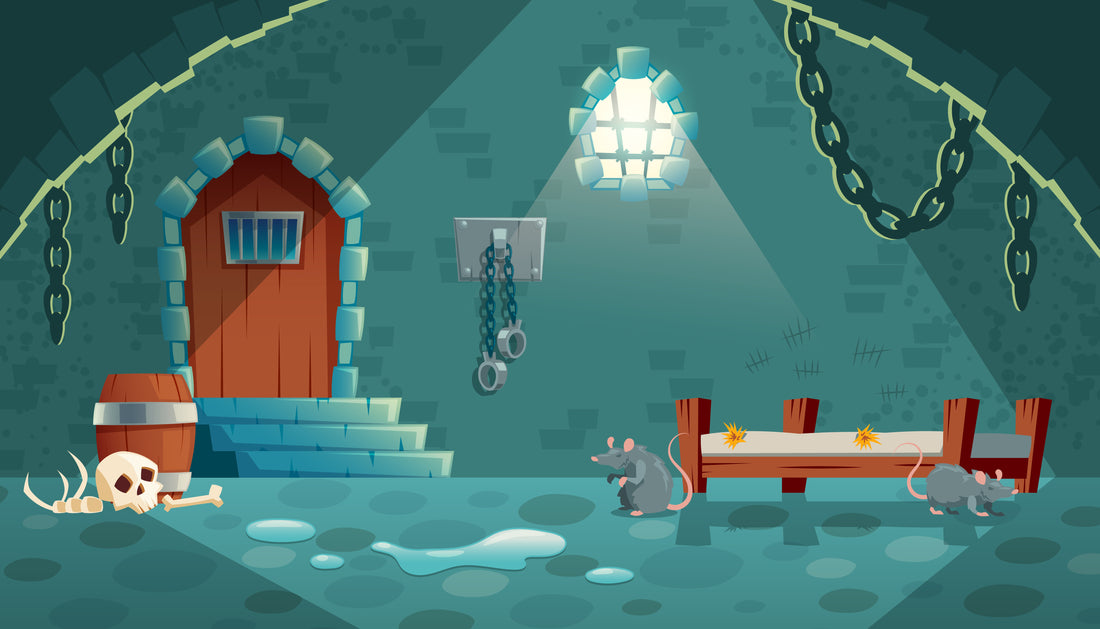The number of times I have had a party enter a room, told them exactly what was in it including important things and creatures, only to spend the next five minutes answering questions about what's in the room, the vibe of the room, and whether there is anyone in the room, is infuriating. Today, we're going to do our best to fix that.
Where to Begin
When it comes to describing what is in a particular room, it normally breaks down into three categories of stuff: Actual POIs, Creatures, and Color. These are all things that must be described when a party enters a room, though the importance placed on each section will vary. But to begin, when a group walks into an area, what should be described to them either first or very soon is that which they would find most visually interesting. This is regardless of which of the three categories this thing falls into. In storytelling terms, this would be the hook. It need not be the thing which is the most interesting, simply what the party would perceive to be the most interesting. If you go on about the dripping of water and the scurrying rats, and then reveal the glowing dragon's head on a pedestal after that, your party will probably have zoned out (just a little, it happens to everyone) and then be snapped back and realize they have a bunch of questions to ask.
So start with what looks cool.
Looking Cool vs Being Cool
Now let's take a step back, to before the party enters a room. As a DM, when designing any given room, you should have answered the question: what is the purpose of this room? Now that purpose might be as simple as, "I want a place to put goblins to fight the party," or something more difficult like, "I need to introduce a plot-important NPC in a way that makes them seem non-threatening." Once you've figured out the reason for the room's existence, you can plan for what are going to be the most important elements of the room, and which parts of it will look the coolest. Often, these two things are one and the same. A trophy room with a glowing jeweled gauntlet at its center, well that's probably a really cool magical item that the party does in fact want. But making one thing look cool and drawing attention is often the perfect way to set up a red herring, or distract momentarily from something more important. You might want to set up an item in the middle of the room that looks like a POI, but is actually worthless, and draws the attention of the party so that the Creature behind them has the chance for a surprise attack.
Holding Attention
So, your party has entered, they've seen what they believe to be the coolest thing, now they can zone out right? Well that's no good. How does a DM hold attention? And keep in mind, these might seem like nasty tricks, but in the long run it means your players will be left with fewer questions and keep the game moving faster.
1. Details, details: Pick a few things, including your most important element of the room, and go into great detail about them. When someone describes something in detail the question you ask is, why are they going into detail about this? And so you pay attention and then try to figure out why this thing is so important.
2. Features? Bah: In general some of the most important parts of a room are often the most boring. What I'm referring to is layout, entrances/exits, and cover. These things are very important if there's going to be a fight, and vital to know where to go to explore and examine. They also tend to be boring. So, when describing these things try to ignore the feature itself in favour of how it ties into the bigger picture, or why it in itself is interesting.
The two doors on the far side of the room are the same basic size and shape, but completely different in every other way. One is blue, emblazoned with runes and has no handle. The other is a violent yellow, flat, and glowing.
Now those sound like some interesting doors, and I can remember that they are next to each other on the far side of the room. Are they actually interesting? Maybe, but even if they turn out to just be doors the players now know where they are and what sets them apart.
3. A General Feeling: In story writing we were always taught to "show don't tell" which is all well and good and also incredibly difficult and inefficient. People are good at picking up on subtext, body language and general moods when they can hear, see, smell, taste and touch. In a movie, soundtracks are incredibly important, as are actor performances and visual cues. In DnD we don't get to utilize the same things. So, to cue players about what's going on, first describe what they literally sense (see, hear and smell primarily) then tell them how it might make them feel.
The room is deadly quiet, the air still against your skin. So still and so quiet it almost seems like the stone walls themselves are waiting for something.
Well, what are they waiting for? This leads us to our next and final way to keep the party unendingly engaged with what you're saying.
4. Questions: Imply questions, present mysteries, be vague about things that have no business being vague. One of the strongest human drivers (and don't forget, no matter what race your players are playing, they themselves should all be human), is curiosity. If your players perceive a question, they will want the answer. A perfect wall missing a single brick, an elf who can't say their own name, a tripwire that doesn't set anything off. Why? Why?? Why???
Implementing Elements
So, now on to the actual things in a room, those creatures, POIs and color. Generally if a room has creatures they will automatically be interesting and worth either talking to, fighting or investigating. POIs refer to traps, puzzles and items in a room, things that must have the party's attention drawn to them specifically through description. The rest of the room, and what fills in the blanks about both creatures and POIs, is made up of color. Color, when it comes to describing a place, is absolutely always the most important part. You could theoretically hold the attention of a party entering a place with nothing interesting and no creatures, simply by getting all the color right. Of course, it would be a pointless room, and I wouldn't really recommend it, but it can also help build tension and further plot narratives. Color also tends to be, in my experience, what gets sacrificed first when DMs and players begin to gain more experience. Everyone tries to cut out extraneous bits of the game, to speed things up. But I think it's important not to lose the wonder, the interest, of the descriptions in DnD. We are, after all, exploring a new world. We should know what it looks like.
Hopefully this helps keep players more engaged in descriptions, or at a minimum helps discern what a dungeon room should contain. If you think any of this is wrong or misleading, that's perfectly fair and we would love to hear in which ways you disagree! Feel free to shoot us an email any time, and happy exploring.


